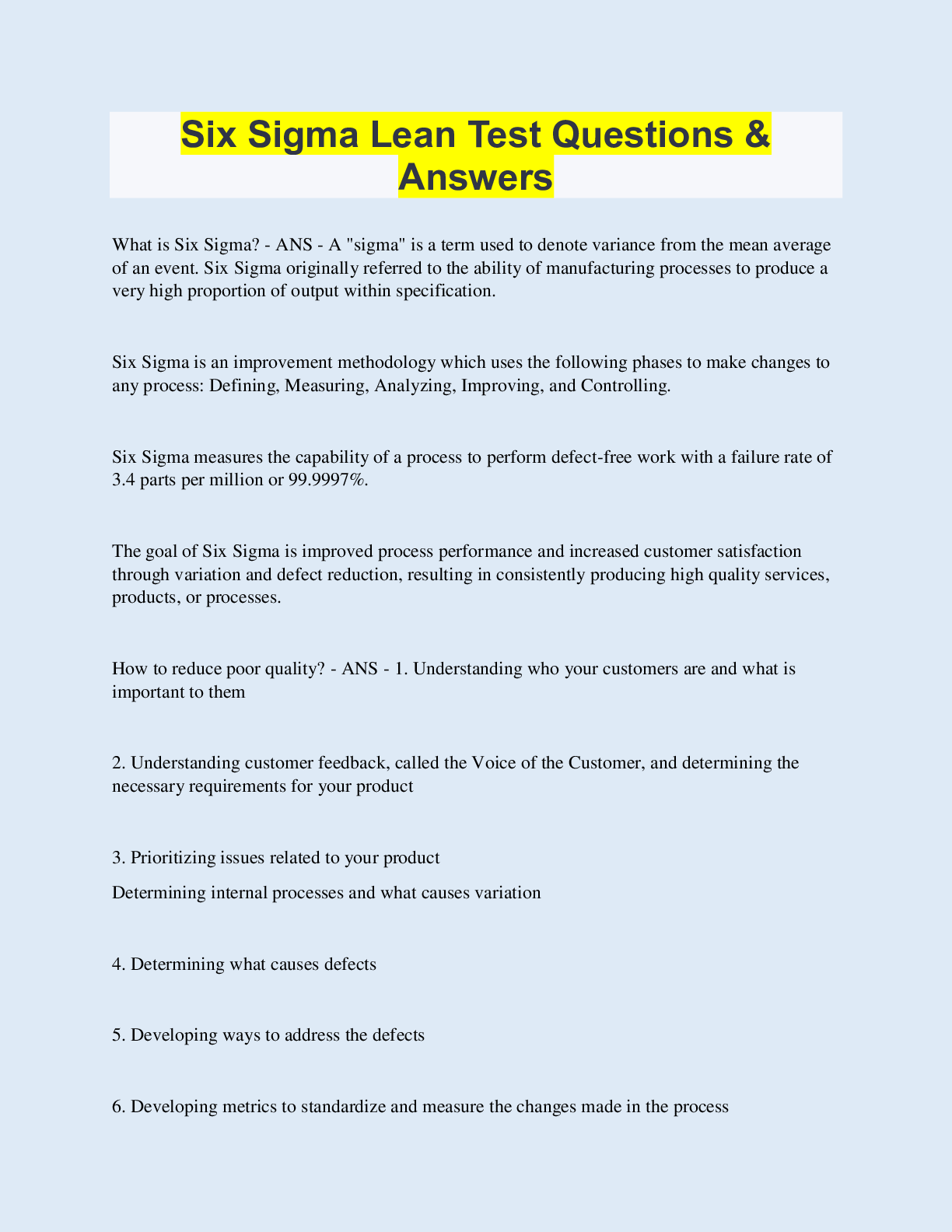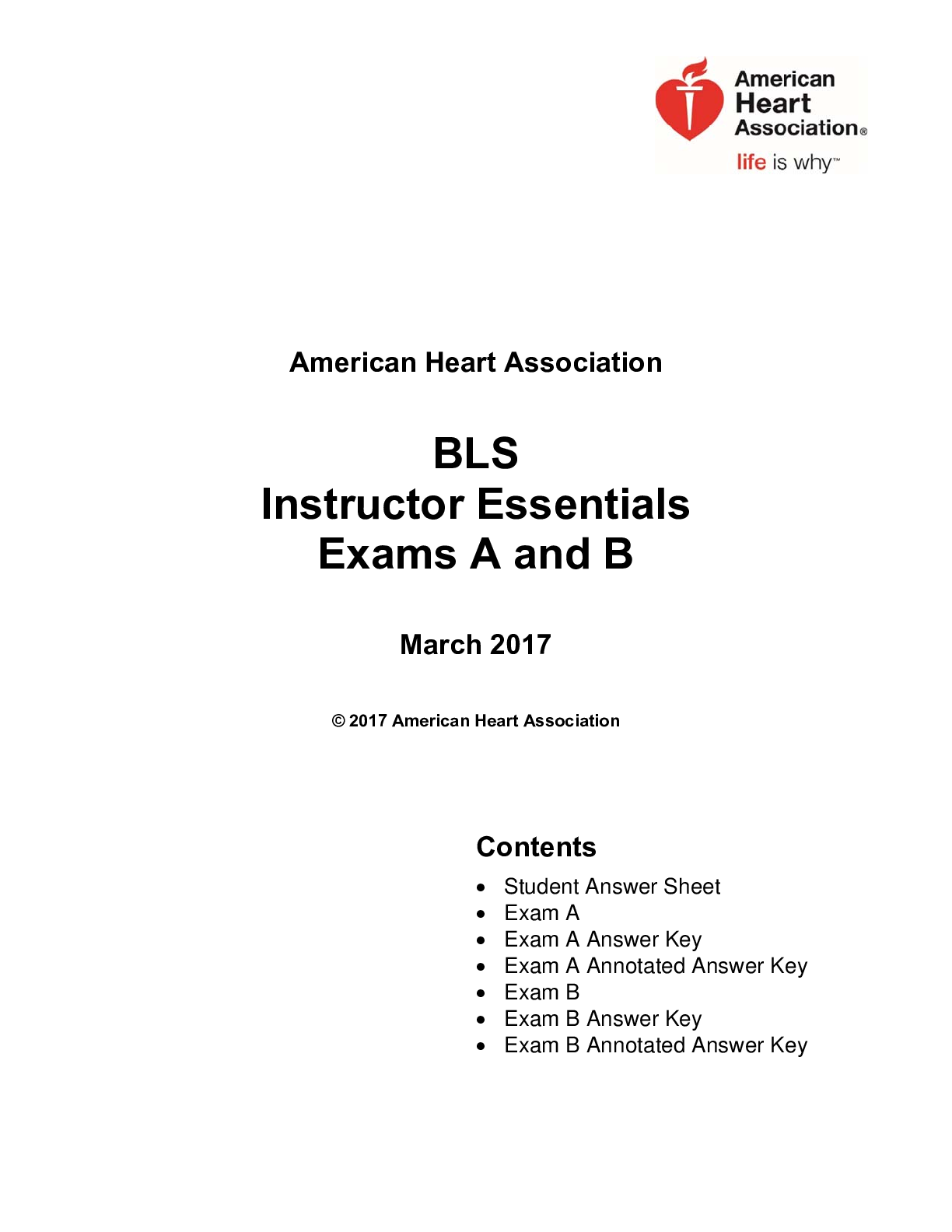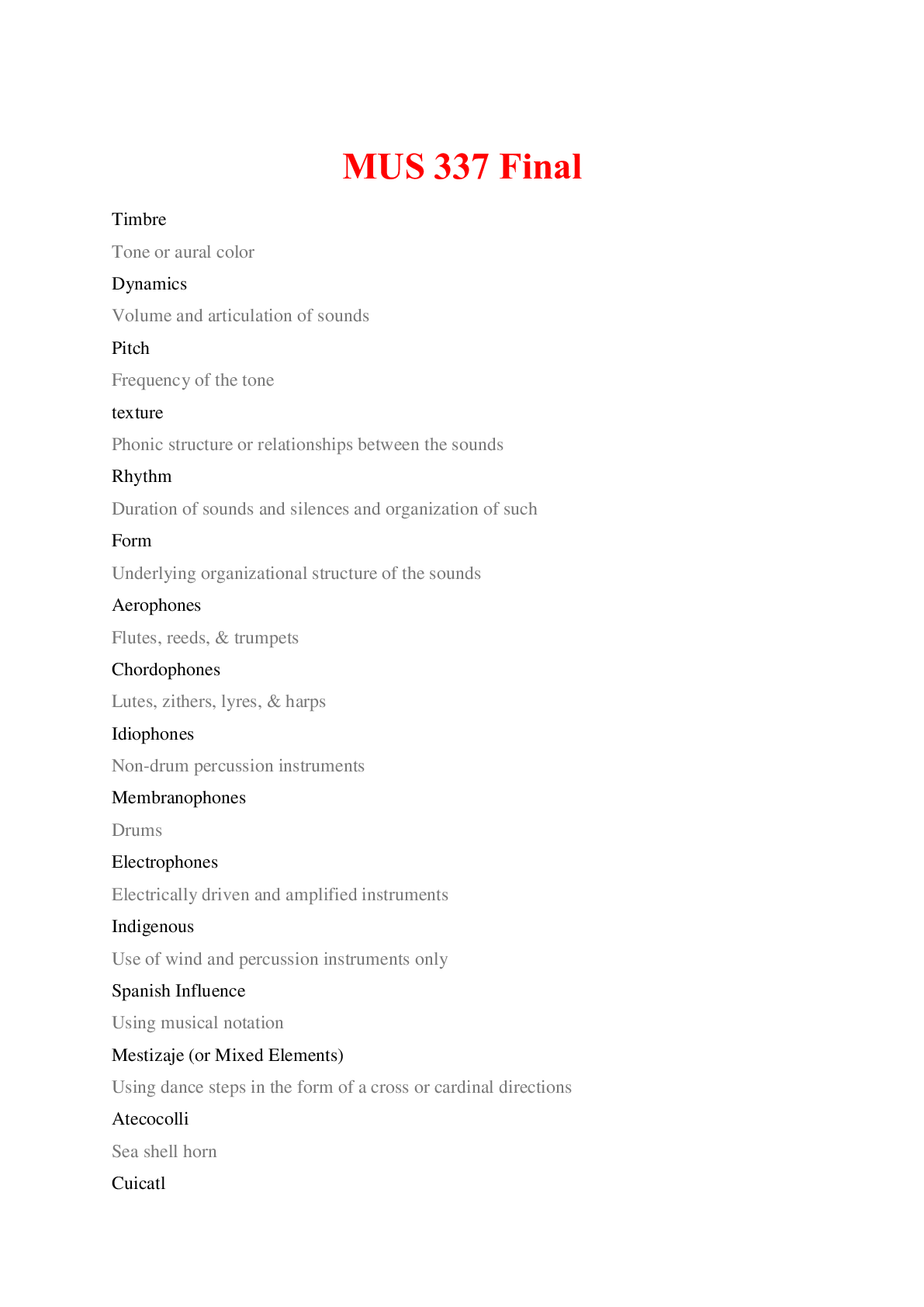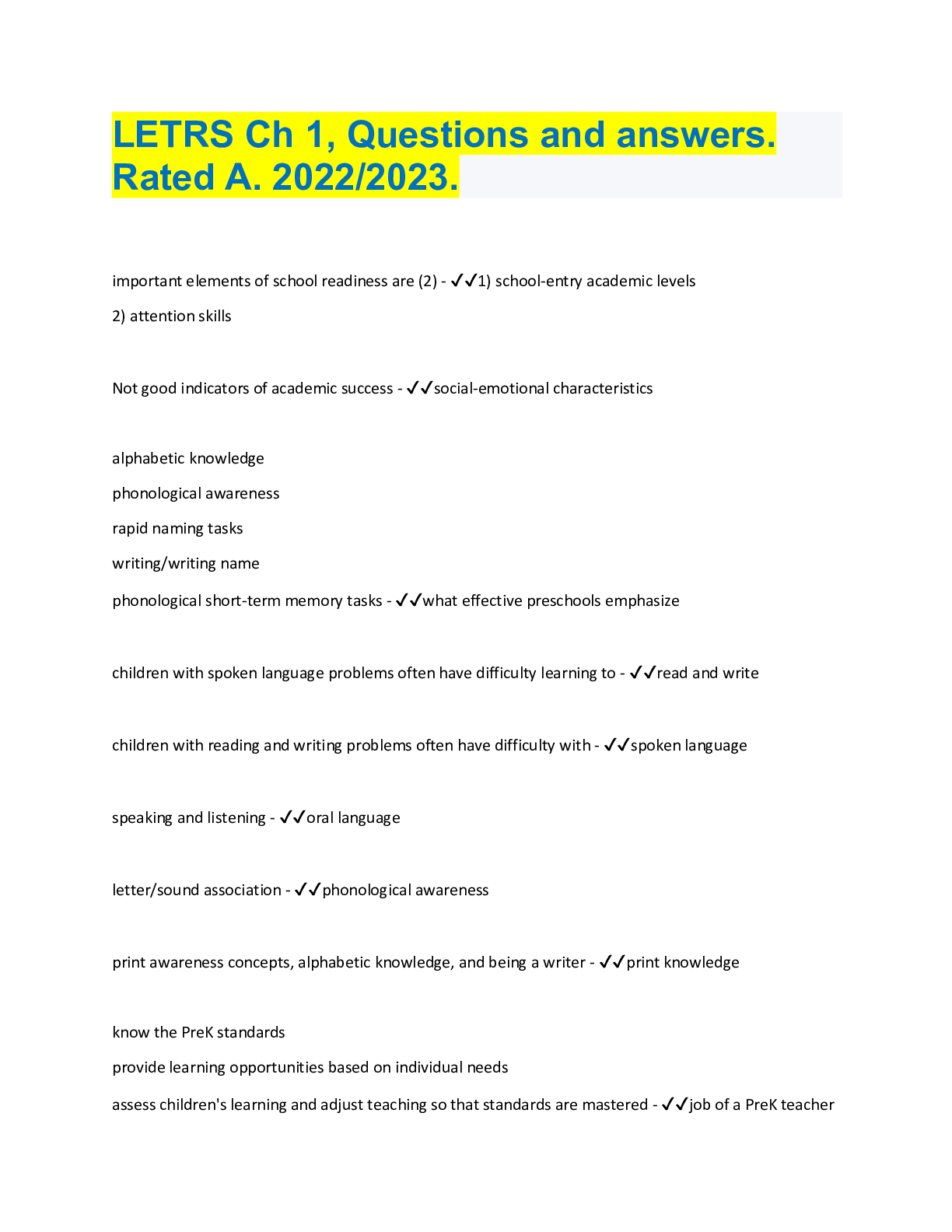Statistics > QUESTIONS & ANSWERS > Six Sigma Lean Test Questions & Answers (All)
Six Sigma Lean Test Questions & Answers
Document Content and Description Below
Six Sigma Lean Test Questions & Answers What is Six Sigma? - ANS - A "sigma" is a term used to denote variance from the mean average of an event. Six Sigma originally referred to the ability of man... ufacturing processes to produce a very high proportion of output within specification. Six Sigma is an improvement methodology which uses the following phases to make changes to any process: Defining, Measuring, Analyzing, Improving, and Controlling. Six Sigma measures the capability of a process to perform defect-free work with a failure rate of 3.4 parts per million or 99.9997%. The goal of Six Sigma is improved process performance and increased customer satisfaction through variation and defect reduction, resulting in consistently producing high quality services, products, or processes. How to reduce poor quality? - ANS - 1. Understanding who your customers are and what is important to them 2. Understanding customer feedback, called the Voice of the Customer, and determining the necessary requirements for your product 3. Prioritizing issues related to your product Determining internal processes and what causes variation 4. Determining what causes defects 5. Developing ways to address the defects 6. Developing metrics to standardize and measure the changes made in the process What is DPMO - ANS - Defects per Million Opportunities, a standardized measure of the error rate of a process Deming's Theories: Theory of Optimization - ANS - In the theory of optimization, the objective of an organization is the optimization of the total system and not the optimization of individual subsystems. Deming's Theories: Theory of Variation - ANS - In the theory of variation, his philosophy focuses on improving the product and service variability in design and manufacturing processes. Deming's Theories: Theory of Knowledge - ANS - In the theory of knowledge, Deming emphasized that knowledge is not possible without theory, and experience does not establish a theory by itself. He says copying a best practice without understanding the theory behind it could be devastating for an organization. Deming's Theories: Theory of Psychology - ANS - In the theory of psychology, he helped explain how to understand people, interactions between people, and interactions between leaders and employees in a system of management. Who Is Dr. Deming? - ANS - Dr. W. Edwards Deming (1900-1993) is best known for reminding management that most problems are systemic and that it is their (management's) responsibility to improve the systems so that workers can do their jobs more effectively. When developing better interactions between employees and managers, he noticed that workers were responsible for 10 to 20 percent of the quality problems in a factory, and that the remaining 80 to 90 percent was under management's control. It was their responsibility to manage the programs accordingly. What is Deming Cycle? - ANS - The Deming Cycle is also known as the Plan-Do-Check-Act (PDCA) Cycle or Plan-Do-Study-Act (PDSA) Cycle. It was invented by Walter Shewhart, but popularized by and significantly enhanced by Deming. PDCA and PDSA are cyclic processes for planning and testing improvement activities prior to full-scale implementation. What are the steps in a Deming Cycle? - ANS - The steps in the Deming PDCA or PDSA Cycle are: 1.Plan a change or test it (P). 2.Do it (D) by carrying out the change or test on a small scale. 3.Check it (C) by observing the effects of the change or test. 4.Study it (S) by reviewing what you have done or changed. 5.Act on what you have learned (A). 6.Repeat and continuously evaluate the process. What is the ultimate goal of Lean Six Sigma? - ANS - The ultimate goal is continued improvement and sustained quality. Deliverables in Define Phase - ANS - This first stage sets the context within which the Six Sigma project is to be performed. 1. Fully trained project team 2. Customer expectations or Voice of the Customer (VOC): Requirements, Critical characteristics (Critical to Quality elements (CTQs), key business drivers of internal and external customer satisfaction. What is important to them? What do they perceive as a defect in a quality or service? 3. Project charter 4. Known business process mapping Deliverables in Measure Phase - ANS - The second stage is where the starting point metrics are recorded to baseline the current performance level and constraints of the process to be worked upon. 1. Key process metrics (KPOVs) 2. Data collection plan 3. A baseline for performance 4. Documentation of variation 5. Communications to team members and stakeholders Deliverables in Analysis Phase - ANS - The third stage reviews the metrics, and using a variety of tools, gains an understanding of the cause and effects interactivity within the system being looked at. 1. Root cause analysis 2. Gap analysis 3. Top-to-bottom data and process analysis Deliverables in Improve Phase - ANS - The fourth stag [Show More]
Last updated: 1 year ago
Preview 1 out of 22 pages

Reviews( 0 )
Document information
Connected school, study & course
About the document
Uploaded On
Oct 15, 2022
Number of pages
22
Written in
Additional information
This document has been written for:
Uploaded
Oct 15, 2022
Downloads
0
Views
82

.png)
.png)
.png)
.png)
.png)
.png)
.png)
.png)
.png)
.png)
.png)

.png)

.png)
.png)














